Iain Treloar hits the city streets on four classically-styled urban bikes.
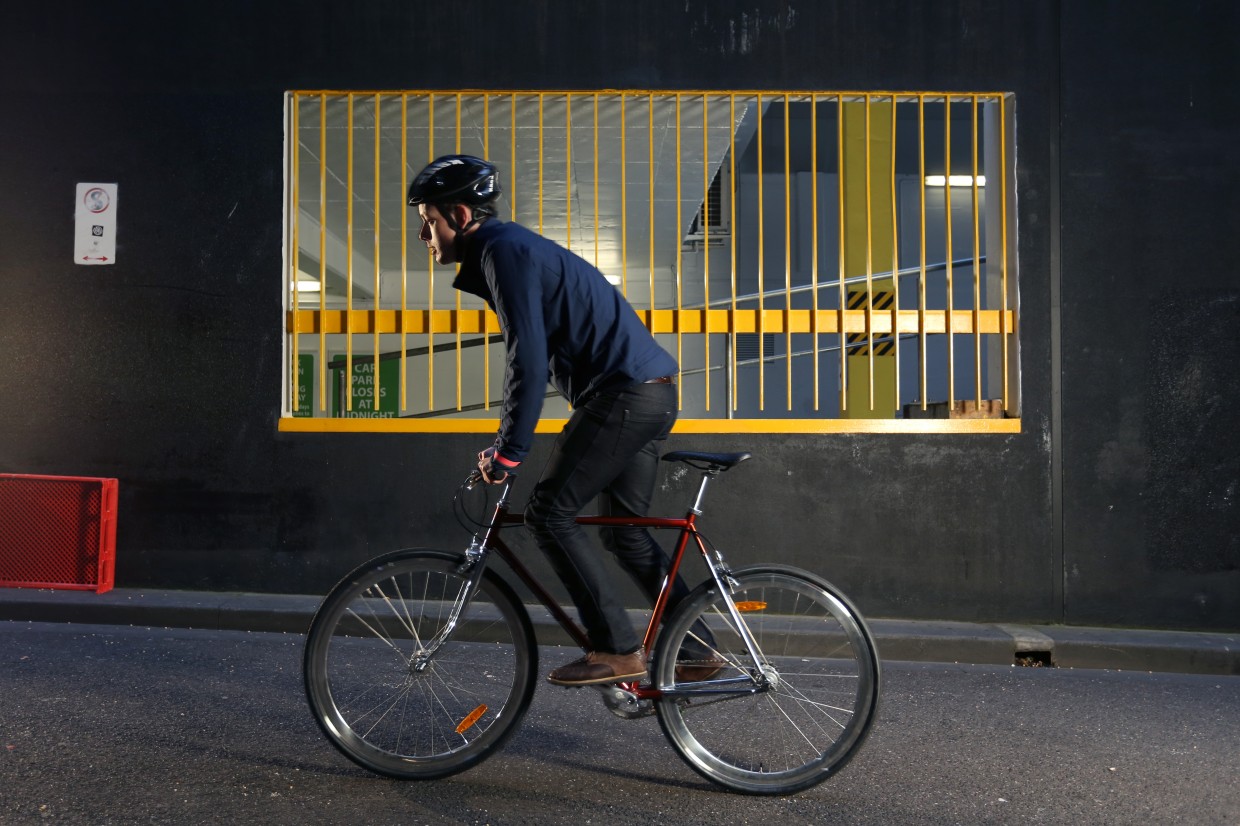
Carbon fibre, disc brakes, and suspension all have their place, but that’s not necessarily the city. An affordable dedicated urban bike has much to recommend it— lower maintenance, decreased servicing costs, and in many cases a riding position best suited to the job.
A big branch on the commuting bike tree is the vintage-styled urban bike. These have really hit their stride over the past couple of years, with multiple companies staking their claim for the hipster dollar. The market has now split firmly into smaller store-bought brands and cheaper online alternatives; the biggest manufacturers have, surprisingly, more or less bowed out of the race.
Take a walk down the main street of any major city in Australia and you’ll see them chained to bike parking rails, huddled together out the front of pubs and bars, or en route to university. They’re the most telling demonstration that thousands are catching the bike bug through these simple, affordable and practical machines.
For this review we sought out a range of bikes that would capture the diversity of the retro commuter. There are a couple of singlespeeds, a 3-speed hub-geared bike and a vintage-styled townie.
Singlespeeds cop a bit of flak, in large part because of their appropriation as a hipster status symbol. The singlespeed boom reached a peak a couple of years ago when everyone seemed to be getting around on one, but have since been abandoned (almost en masse, around 2011–12) by most of the major brands. Smaller manufacturers with a narrower urban focus have since all but taken over the category.
Apart from their growing scarcity on the sales floor—and corresponding boom for the independents—the singlespeed has a lot of benefits. There’s no simpler drivetrain set-up, they’re exceptionally low maintenance and there’s a certain ‘Zen’ quality to the fact that as fast as you can pedal is as fast as you can go. It’s a simple equation—effort equals forward motion.
For more on singlespeeds, see Ride On‘s article ‘Single minded‘.
For all the benefits of singlespeeds, some riders may understandably be reluctant to adopt them as an everyday bike. The 3-speed hub gear is a nod to that type of rider, offering a few gearing options in a low maintenance package that doesn’t compromise the singlespeed’s clean lines. Tellingly, in hillier cities, such as Sydney, these outsell their singlespeed equivalents.
The vintage styled town-bike is—at least for men—a relatively niche style, but is hugely popular for women. These bikes are characterised by their upright riding position, usually paired with swept-back handlebars, unfussy steel frames and full length mudguards.
Each of these bikes is defined not by rampaging top speed or feathery light weight, but by their accessibility. Fewer gears may not provide the range required for lengthy jaunts in hilly terrain, but for short commutes will do the trick just fine. More importantly, they’re lower maintenance, and non-confrontational, and more often than not, wrapped in a stylish package: just the ticket for a commuting bike.
Brown Jersey Divvy Van
$499
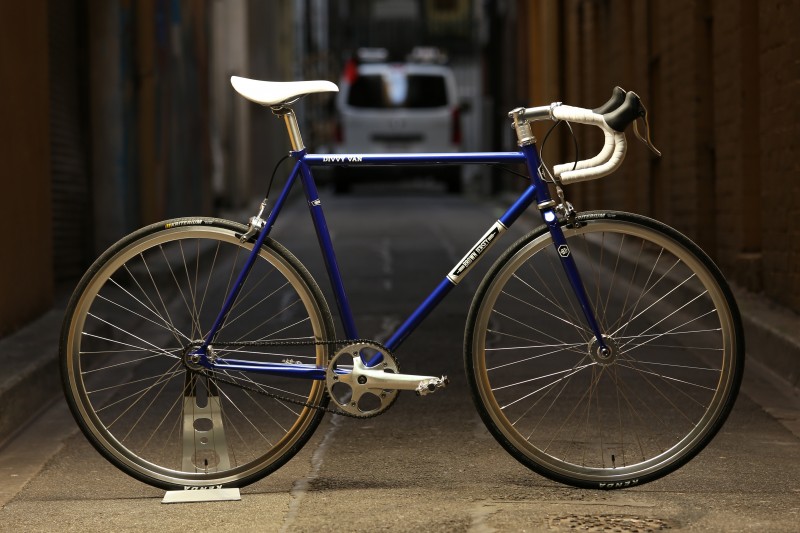
Brown Jersey is a small independent brand based in New South Wales, and—at four years old—are still quite new to the market. They see their path as divergent from the cheaper singlespeeds and vintage styled bikes popular in the market, retailing at a higher price point and featuring nice inclusions like sealed bearings throughout.
At the heart of any bike is the frame, and the Divvy Van is well-finished double-butted chromoly, rather than the hi-tensile steel common on cheaper alternatives. The dropouts were tidy, with chain-tensioners elegantly integrated into the rear, and the fork was nicely lugged. Whilst this tubing allows for slightly lower weight, it also offers an improved ride quality—the tubing can be thicker (and hence, stronger) in areas of greater stress, such as around the headset and bottom bracket. That said, the Divvy Van is still no lightweight, coming in at 11.1kg in our medium sized test bike.
On a single speed designed for urban durability, that’s not such a drawback. The Divvy Van feels hardy rather than flighty—once the 46×17 gear is up to speed it feels like a bit of a steamroller, gliding along, the frame negating shoddy road surfaces. In terms of actual ride quality, it was my favourite on test—eventually. But it took some time to reveal its charms, failing to endear itself initially with some very unconventional component choices.
My biggest gripe with the Divvy Van was its cockpit. The handlebars were a cumbersome 44cm across—very strange for a medium sized bike—with the hoods positioned far around the curve, putting the reach to the levers at a massive 13cm from the stem. After shifting the levers back, the balance of the bike was significantly improved, but the shape was still a little off. It was, however, still tall and long for the designated size, to the extent that I’d almost advise ordering a full size down from your usual.
For a singlespeed bike, there’s a certain ‘ride all day’ quality about the Divvy Van; it happily keeps ticking over on flat terrain and is extremely comfortable while doing so. But if you’re riding this all day, chances are that (like me) you’ll be a little annoyed that there are no mounting points for a bottle cage on the frame—although unfortunately, this isn’t anomalous in the category.
Brown Jersey pride themselves on quality, and they’ve ticked the boxes with the frame, which has a really lovely feel to it. That said, I struggled to overcome the very odd handlebar set-up and was disappointed with the unappealing saddle. A bike is a sum of its parts, and despite the considerable merits of the frame, I question whether many people spending $649 on a bike like this will be willing to spend the effort setting it up to the standard it deserves.

For more and to buy, brownjersey.com.au.
Fuji Feather
$749
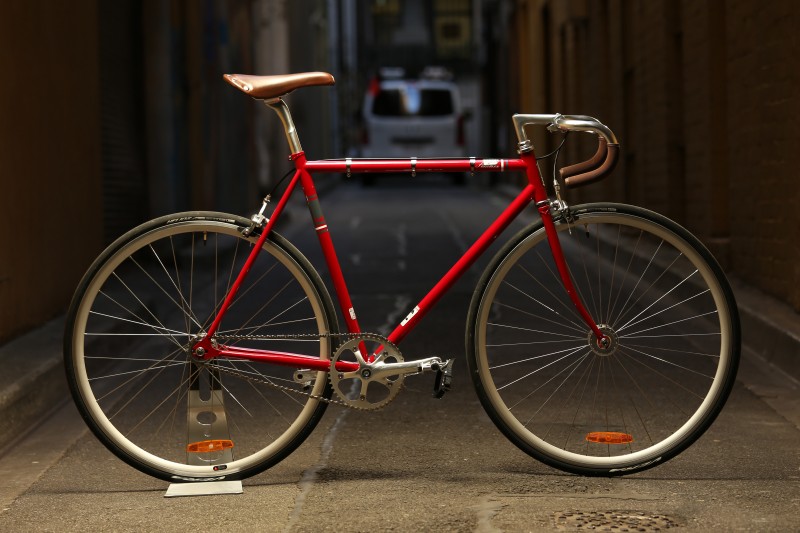
Out of the varying strands of singlespeeds, one of the most revered is the NJS track bike. This is a designation used for Keirin racing in Japan, where bike design is rigidly defined to level the playing field, and bikes of this category are highly regarded for their perceived ‘authenticity’. True to the brand’s origins, the Fuji Feather borrows heavily from NJS design cues—a quill stem, bare silver track bars with rubber grips in the drops, toe-clips and a classic chromoly frame with lugged fork crown and seatpost clamp.
The Feather is lovely to look at, but how does a bike of this style handle the demands of a daily commute? Quite well, actually, with a couple of exceptions. The bare handlebar is a bit sketchy and would be a lot more usable (albeit less shiny) with handlebar tape, and it’s difficult to get much leverage out of the saddle with your hands in the centre of a slippery 40cm wide bar, as opposed to forward on a road lever. The brake levers are positioned in the centre of the handlebar, making for easy stopping when riding on the flats of the bar, but are inaccessible from in the drops. Braking performance—when you can actually get at the levers—is actually remarkably good on the Feather; the levers exert a more powerful pull than any equivalently priced road lever on a drop handlebar that we’ve tested.
At 10.4kg it’s a bit lighter than the Divvy Van, and a touch more nimble in feel. This may play a part in it getting up to speed quicker than the Brown Jersey despite being geared slightly higher (46×16). It holds that speed effectively as well, suggesting that the gearing chosen is about right for flat roads. However, because of the handlebar configuration it climbs poorly, effectively restricting you to the saddle and a slow-cadence, uphill grind.
The sporty geometry of the Feather, with a decent amount of drop from seat to bar, is exaggerated by the forward sloping top-tube—another feature tying it to its Keirin heritage—and short head-tube. It’s fun to ride, but less ‘everyday commuter’ and more ‘road rider’s stripped-back weekender’, designed for fair weather and sub-five kilometre jaunts. The lack of bottle-cage, rack and mudguard mounts add to this perception.
Compared to the Brown Jersey, it’s a harsher ride, with more feedback from the road coming through the rear of the bike. The front’s a bit rougher too, but that’s exacerbated by the lack of bar-tape, so it’s hard to draw any firm conclusions there. It’s a zippy, fun, little thing, with a more polished overall finish than the Divvy Van, but it’s not the best demonstration of the all-purpose merits of a singlespeed.

For more, australia.fujibikes.com.
Chappelli Bronze 3s
$495
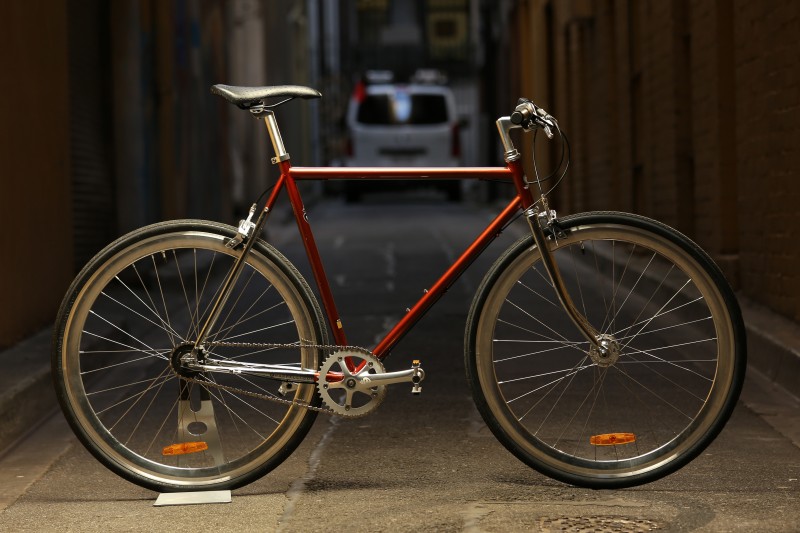
Chappelli have a growing range of urban bikes, including vintagestyled road bikes, singlespeeds and internal hub-geared options. Although singlespeeds remain popular, many prospective buyers have concerns about their real-world practicality. Internally geared hubs retain the low-maintenance simplicity of the singlespeed and the clean aesthetics, at the cost of some added weight. After testing two singlespeeds it seemed fair to try out an internally geared bike to see whether it made a positive difference to rideability.
One of the lookers of the bunch, the Chappelli Bronze 3s is also the cheapest on test. Although you’re getting change from $500, the glitzy finish of the Bronze—complete with chrome fork and stays—looks impressive. If there have been any corners cut to get the price down, they’re not obvious ones.
The Chappelli is available in two different sizes—a 54cm and a 58cm. The 58cm that I reviewed was slightly more cramped in the reach than ideal, with an unusually short 56cm top tube for the size. This did, however, allow for a fairly upright riding position that was well-suited to sedate commuting, with shallow angled head- and seat-tube exemplifying the high-speed stability. With a classically styled raked fork, the handling bordered on too twitchy at low speeds—small adjustments of direction were more challenging than ideal, with attentive riding required to stop the front wheel from getting out of hand.
Although the overall finish of the bike was of a high standard—with matching seat and leather grips, alloy cranks and tidy dropouts—some of the components weren’t quite up to scratch. The gearing was a little low, with a 42 tooth front cog and large 22 tooth rear. This put the top gear as most appropriate for riding on the flat at a comfortable cadence, and made the lowest gear pretty much redundant for my needs. The up-shifts were smooth and fluid, but the down-shifts were flawed; to execute a shift down in gear, it was necessary to pause pedalling altogether until the shift was executed. Poor shifting under load isn’t uncommon for hub gears, but it was particularly frustrating here, as hard-won uphill momentum was stripped away at the least opportune time.
If you can overcome these gearing gripes, there is nonetheless plenty to recommend the Chappelli. It’s been built with a greater nod toward day-to-day functionality than either of the singlespeeds here, including a set of bottle cage and rack mounts. At 12kg, the weight penalty of the hub gear isn’t too severe, and many will enjoy having the option of a couple of lower gears there, just in case, even if they may not actually get used all that often. Paired with an affordable price and elegant styling, there’s a lot to like here.

For more and to buy, chappelli.com.au.
Virtue Seven
$599
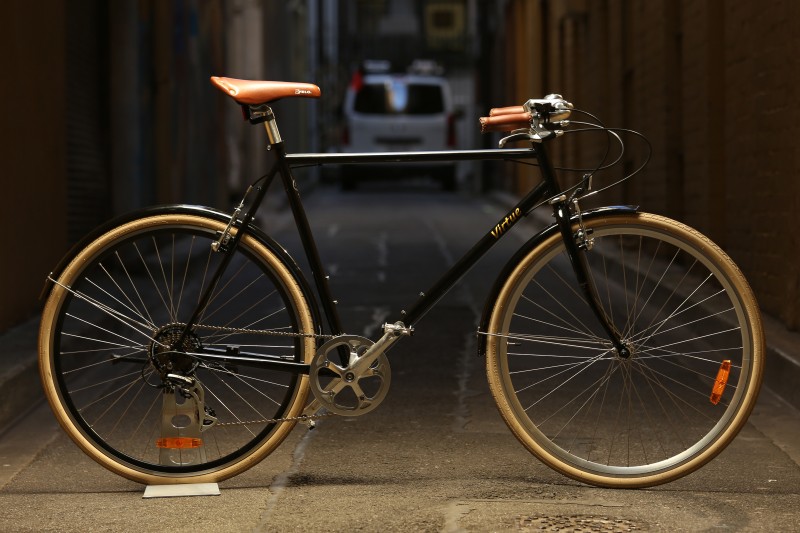
Virtue, a Californian brand, has just received distribution in Australia through Reid Cycles. The Seven is a vintage-styled town bike, finished in classic gloss black with a splash of chrome, gold and brown. Of the bikes tested here it’s by some margin the most old-school in appearance, and—equipped with full length mudguards, two bottle-cage mounts and seven gears—arguably the most practical for day to day use.
Whether many commuters are likely to be drawn towards a bike of this style is another matter entirely, given the ‘fashion statement’ perception of a vintage-styled bike such as this. And granted, it will always lend itself more to shorter, leisurely-paced rides from the inner-suburbs to the city or a casual bike-path potter than outer-suburban arterials. However, with the parameters of its optimum habitat established, it’s possible to make a realistic assessment of the Virtue’s strengths.
The riding position of the Virtue is reasonably upright, with swept-back ‘porteur’ style handlebars offering a natural position for the hands, which rest on thick padded faux-leather grips. There’s a good deal of flex in the bars, which, although adding to the comfort of the arms, is a little alarming on climbs or hard accelerations. This handlebar style has a dramatic impact on the ride quality of the bike, altering the entire geometry of the front end and effectively resulting in a negative length stem (hands behind the fork steerer). A consequence of this was that the handling of the Virtue was a little squirrelly at slow speeds, but stabilised as the pace increased.
The componentry on the bike was, at first glance, a little unimpressive for the bike’s price. The thumb shifter in particular was very budget looking in appearance, and sits toward the bottom of the Shimano hierarchy. However, appearances aside, it was actually a very sensible inclusion; this shape of handlebars makes most alternative shifter styles feel quite unnatural, so it’s actually the most appropriate tool for this task. The shifting was crisp, contradicting the primitive appearance. Likewise, the V-brakes provided strong braking—although revealed an imperfect join in the front wheel which caused some pulsing during hard stops.
Full length steel mudguards and a kick-stand add to the functionality of this bike, but also play a part in contributing to its weight. At 13.2kg for our large-sized test bike, the weight was particularly noted on steeper hills, and if not for the generously spaced gearing range, would have hampered its practicality in hillier terrain more than it did.
However, for relatively flat gentler paced rides, where the focus is more on enjoying the journey rather than trying to abbreviate it, the Virtue was a surprisingly enjoyable bike to ride. I wasn’t expecting to like it anywhere near as much as I did, and if you’re in the market for a bike of this style, it’s a model well worth consideration.

For more and to buy, reidcycles.com.au.
Ride On content is editorially independent, but is supported financially by members of Bicycle Network. If you enjoy our articles and want to support the future publication of high-quality content, please consider helping out by becoming a member.

Beautiful bikes! However since I was hit by a taxi I need a Mixte frame bike. How about doing a spread on those?
Anne
Hi Anne, this article might be just what you’re looking for – https://rideonmagazine.com.au/vintage-velos/
How about a story on true urban bikes. not the trendy ones. You know the ones. Belt drives, hub gears and disk brakes. safer and low maintenance. A proper commute bike.
Only one had gears? You must be way tougher than me to get up Hobarts streets, let alone Lynton, Melefont or Napoleon St in a single gear bike! I struggle in first gear…
🙂 Jono
It would be nice to see some reviews and pictures of women’s bikes included. Also, I would not want to deal with the hills in my commute without a full range of gears.
When rating the contenders I’d like to see the comparative data to your current ‘top of class’.
With the highest bike in this review only getting an 82%, I’m not really impressed by any in the bunch.
Still, I guess the review also tells me which bikes to avoid.